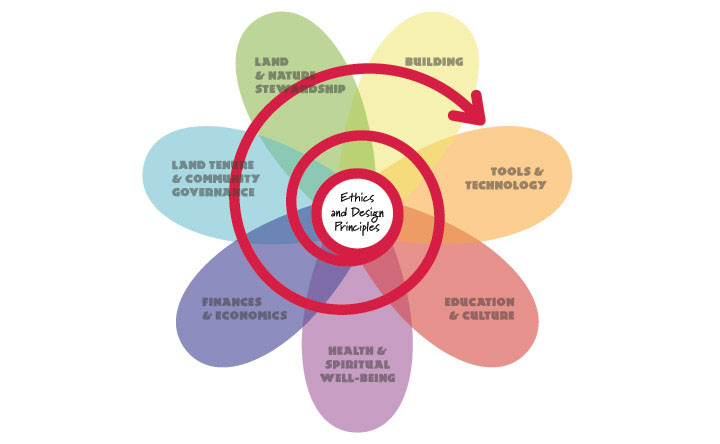Taylor is a certified Permaculture Designer and Architect. Having been trained through the Permaculture Design Course at the GrowHaus in Denver, Colorado, he has integrated Permaculture principals into all aspects of Manifold’s design. This integration was an easy one. At root, permaculture is good design and good design is permaculture.
Permaculture Principals
Permaculture is a branch of ecological design, ecological engineering, and environmental design which develops sustainable architecture and self-maintained agricultural systems modeled from natural ecosystems. The goal of Permaculture is to meet human needs while preserving and increasing ecosystem health.
The core tenets of permaculture are:
- Take care of the earth: Provision for all life systems to continue and multiply. This is the first principle, because without a healthy earth, humans cannot flourish.
- Take care of the people: Provision for people to access those resources necessary for their existence.
- Set limits to consumption and reproduction, and redistribute surplus: Healthy natural systems use outputs from each element to nourish others. We humans can do the same. By governing our own needs, we can set resources aside to further the above principles.
Permaculture design emphasizes patterns of landscape, function, and species assemblies. It asks the question, “Where does this element go? How can it be placed for the maximum benefit of the system?” To answer this question, the central concept of permaculture is maximizing useful connections between components and synergy of the final design. The focus of permaculture, therefore, is not on each separate element, but rather on the relationships created among elements by the way they are placed together; the whole becoming greater than the sum of its parts. Permaculture design therefore seeks to minimize waste, human labor, and energy input by building systems with maximal benefits between design elements to achieve a high level of synergy. Permaculture designs evolve over time by taking into account these relationships and elements and can become extremely complex systems that produce a high density of food and structures with minimal input.
The design principles which are the conceptual foundation of permaculture were derived from the science of systems ecology and study of pre-industrial examples of sustainable land use. Permaculture draws from several disciplines including organic farming, agroforestry, integrated farming, sustainable development, and applied ecology. Permaculture has been applied most commonly to the design of housing and landscaping, integrating techniques such as agroforestry, natural building, and rainwater harvesting within the context of permaculture design principles and theory.
For a more in-depth discussion of permaculture principals, check out this brochure.

